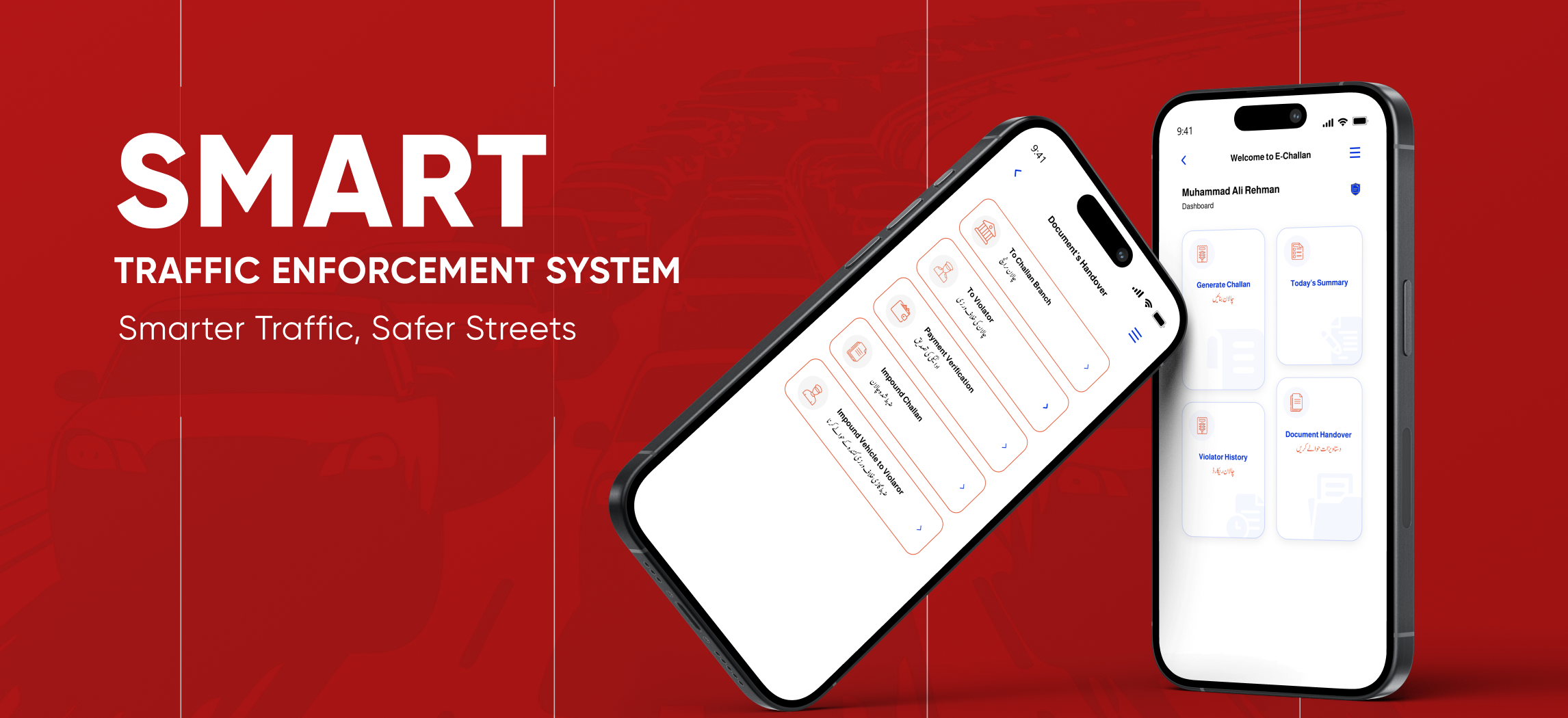
CLIENT PROFILE
Elite Traffic Authorities in Pakistan
- Khyber Pakhtunkhwa Traffic Department
- Islamabad Traffic Police (ITP)
- Lahore Ring Road Authority
Serving a diverse mix of urban and rural roads across a province of over 40 million people, this department needed to modernize decades-old manual workflows.
Tasked with managing the capital’s rapidly growing urban traffic (population ~1.3 million), ITP sought greater transparency and speed in day-to-day enforcement.
Responsible for maintaining uninterrupted, high-speed travel around Lahore (metro population ~13 million), the Authority required a high-availability system that could keep pace with heavy vehicle volumes.

THE CHALLENGE
Digital Transformation Imperative
Each agency recognized that paper-based challans, offline receipts and siloed offender files were no longer fit for today’s fast-moving, digitally savvy commuters. Citizens expect instant, transparent service—and enforcement bodies deserve real-time data to keep roads safe.
Our client envisioned a unified, mobile-first enforcement platform that would:
- Eliminate manual errors and curb corrupt practices
- Centralize every violator record and transaction
- Provide instant SMS notifications and online payment options
- Deliver analytics for proactive, data-driven policing
To achieve this vision, they engaged APP IN SNAP, the leading Pakistani software house specializing in end-to-end e-governance solutions.

OUR PROCESS
1. Requirements Gathering
- Workshops with senior officers in Peshawar, Islamabad and Lahore to map existing paper-based processes and pain points.
- “Must-have” features include: Mobile login restricted to devices registered via IMEI, ensuring that only pre-approved officers can access the system; zone-wise assignment of officers; and real-time SMS alerts.
2. Design
- To ensure an intuitive and seamless user experience for traffic officers in the field, our design team followed a structured, user-centered design approach.
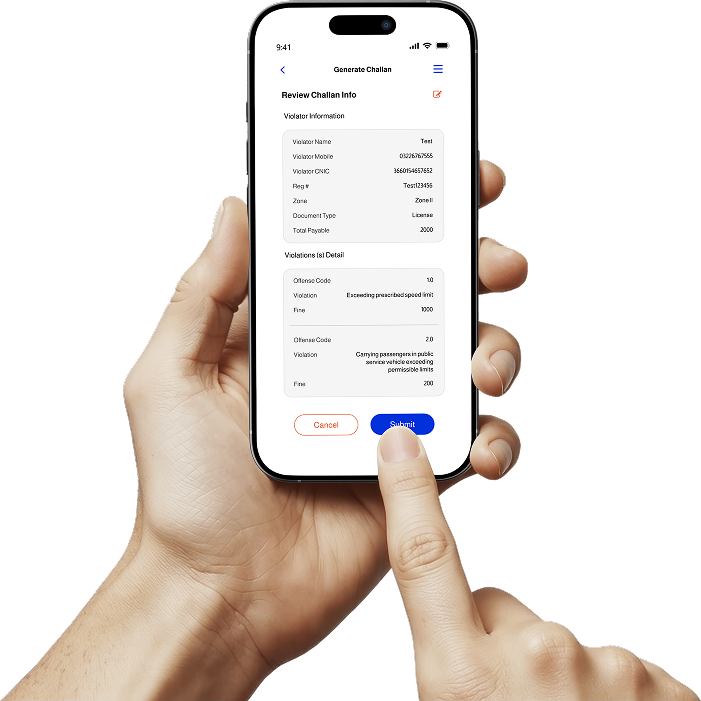
KEY DELIVERABLES
- User Personas for officers, supervisors, and finance teams
- Information Architecture & Data Flow Diagrams (DFDs)
- Wireframes (Low-Fidelity) with interactive prototypes
- Visual Design (High-Fidelity) including fully clickable prototypes for both web and mobile interfaces
- User Personas for officers, supervisors, and finance teams
- Information Architecture & Data Flow Diagrams (DFDs)
- Wireframes (Low-Fidelity) with interactive prototypes
- Visual Design (High-Fidelity) including fully clickable prototypes for both web and mobile interfaces
DESIGN TOOLS USED:
- Figma
- Adobe Illustrator
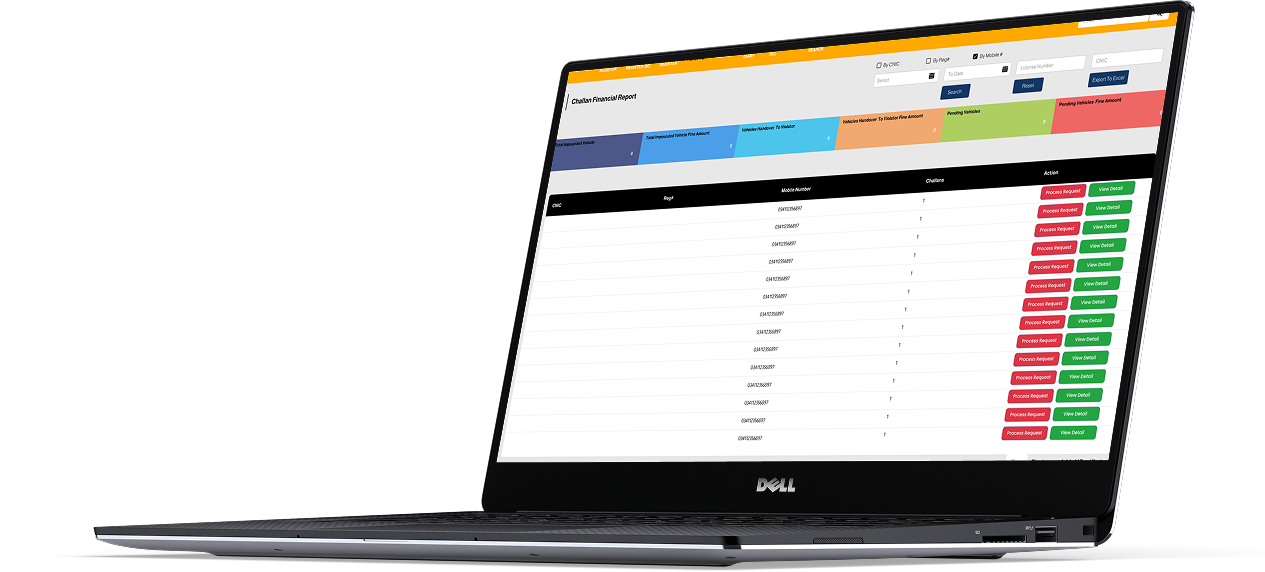
3. Development
- To ensure an intuitive and seamless user experience for traffic officers in the field, our design team followed a structured, user-centered design approach.
- The technical foundation of the solution was built to ensure speed, security, and seamless integration with national systems.
Platform:
- Android-based mobile application for on-the-go enforcement
System Integrations:
- SMS Gateway for real-time violation alerts to citizens
- Secure payment gateway integration for instant online payments, including JazzCash, Easypaisa, Zindigi, and JS Bank
Deployment & DevOps:
- The complete solution was deployed on APP IN SNAP’s secure, high-availability servers ensuring uninterrupted access across all enforcement zones
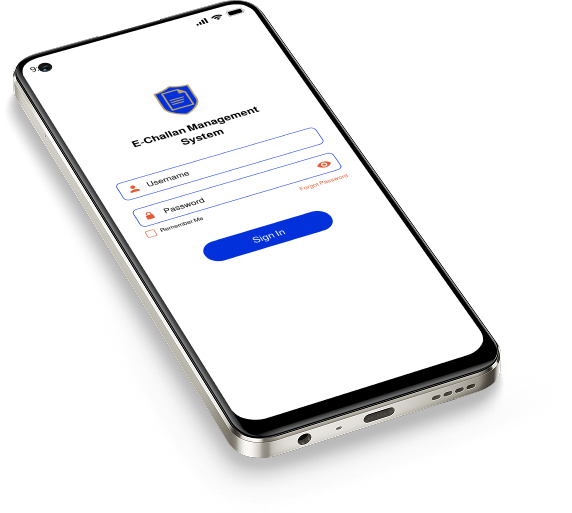
TECHNOLOGIES USED:
Frontend: Android
Backend: .NET
4. Testing & QA
- A comprehensive quality assurance process was executed to ensure robust performance, data security, and usability across diverse operating environments.
Testing Types Performed:
- System Testing
- Performance Testing
- Security Testing
- Compatibility Testing
- Scalability Testing
TESTING TOOL USED:
- Appium
- Selenium
- Playwright
- Cypress
- Postman
- JMeter
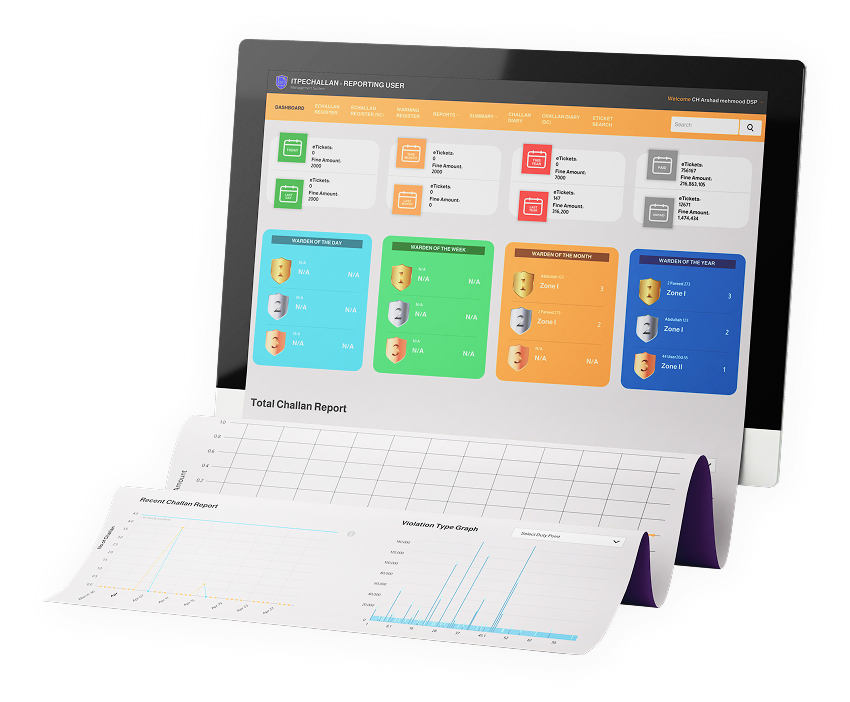

SOLUTION ROLL OUT
1. Pilot Deployment
- Live pilot in one traffic division per agency, with 20 “super-admin-users” testing real-time challan issuance, offline-mode data caching and instant payment reconciliation
2. Scale-Up & Training
- Officer Training:
- Train-The-Trainer Model to embed local expertise and reduce dependency on external consultants.
KP Province: 1,421 officers trained over 8 weeks
Islamabad Traffic Police: 497 officers over 6 weeks
Lahore Ring Road: 300 officers over 4 weeks
3. Stabilization & Support
- 24/7 dedicated helpdesk for the first 90 days post-go-live.
- Monthly “tune-up” meetings to monitor performance metrics, fix emerging issues and roll out minor enhancements.
The platform was delivered as a Hybrid Architecture—a cloud-hosted backend for scalability, with on-premise kiosks at major police stations to guarantee zero-downtime zone operations.

RESULTS & IMPACT
Challenges Addressed
Before deployment, all three agencies struggled with:
- Human-error laden, paper-based challans that took 3–5 minutes each and frequently went “missing”.
- No single source of truth—repeat offender tracking was impossible, and legal compliance audits were mired in shoebox files.
- Offline payments only, with finance teams spending days reconciling bank statements to cash logs.
- Minimal public trust—citizens perceived enforcement as inconsistent, breeding complaints of bribery and favoritism.

SUCCESS METRICS
| Metric | KP Province | Islamabad Traffic Police | Lahore Traffic Police |
|---|---|---|---|
| Challans Issued | 17,505,600 | 5,835,225 | 137,019 |
| Total Fines (PKR) | 8,983,144,460 | 2,107,832,450 | 80,148,964 |
| Average Issuance Time | 28 sec/ticket | 30 sec/ticket | 32 sec/ticket |
| Paperwork Reduction | 100 % | 100 % | 100 % |
| Dispute Rate | ↓ 50 % | ↓ 45 % | ↓ 40 % |
| Reconciliation Load | ↓ 75 % | ↓ 75 % | ↓ 75 % |

TESTIMONIALS


ACP OPERATIONS
Islamabad Traffic Police
We rolled this out to 1,400 officers in two months. The support team from APP IN SNAP never left our side, and day one onward we saw efficiency gains.

DIG TRAFFIC
KP Province
On the Ring Road, uptime is critical. This hybrid, cloud-backed solution gives us both speed and reliability.
APP IN SNAP’s Comprehensive Role
- End-to-end delivery: From needs analysis and custom development, through deployment, training, and ongoing 24/7 support.
- Flexible architecture: Hybrid cloud/on-premise model tailored to each agency’s security policy.

